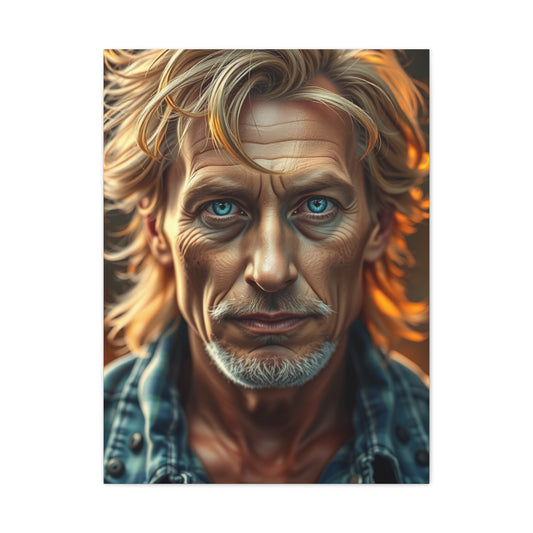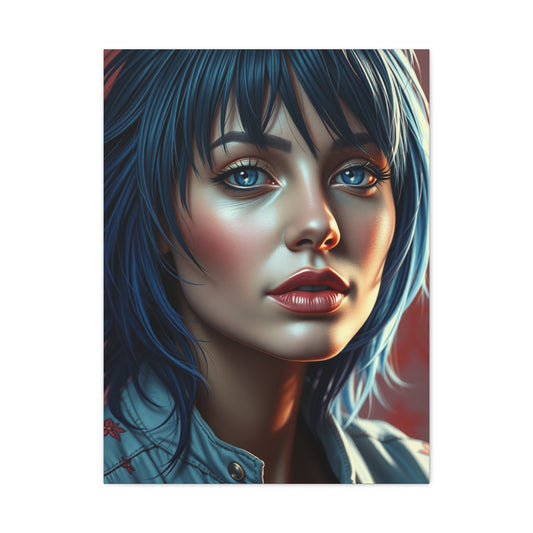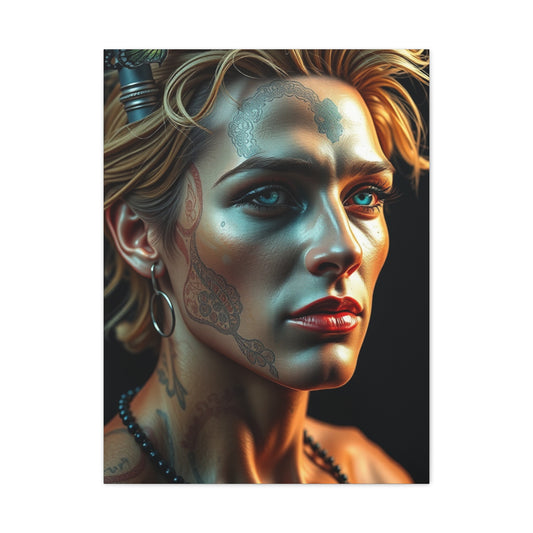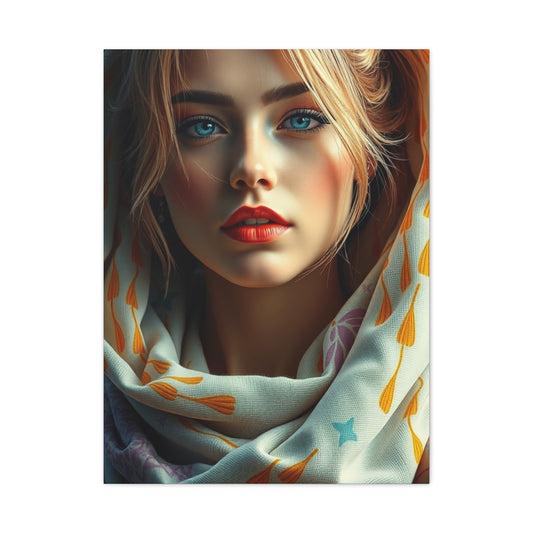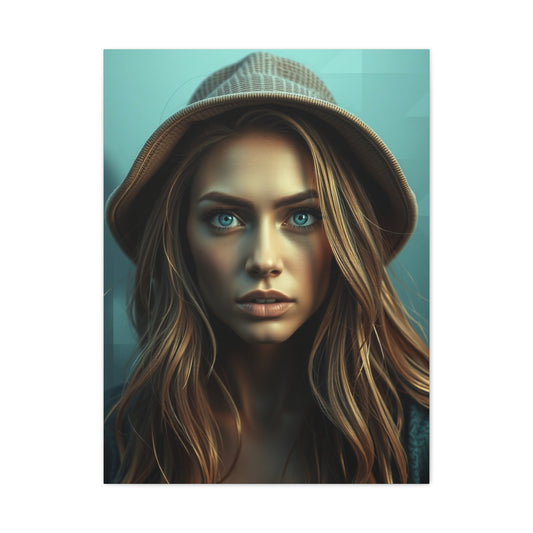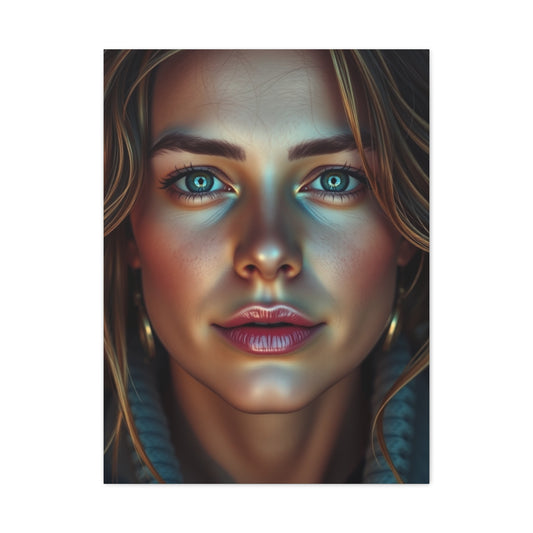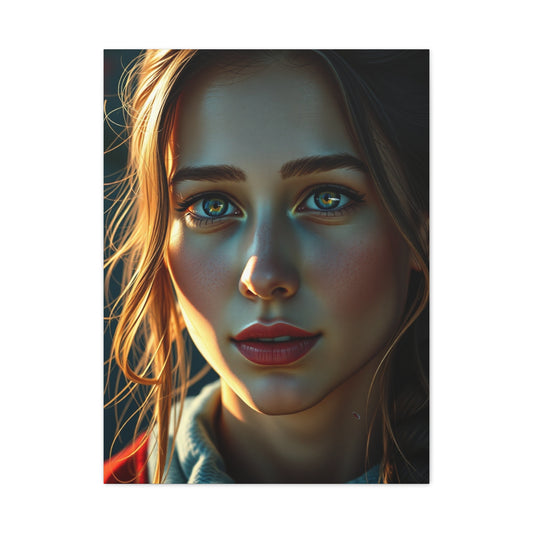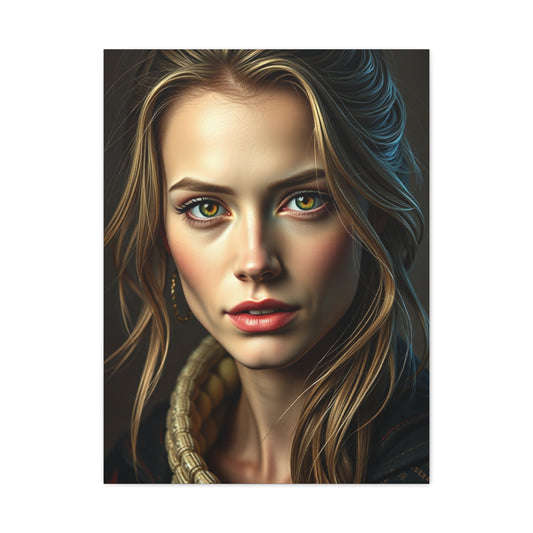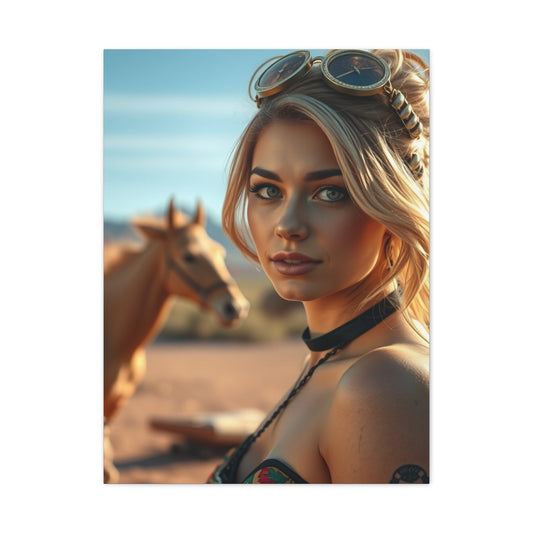The Complete Guide to Nicky Boehme's Timeless Art Collection: From Cottage Scenes to Coastal Views
In the world of contemporary fine art, few artists capture the essence of tranquil living and romantic idealism quite like Nicky Boehme. Her distinctive style has garnered widespread appreciation among collectors and home decorators alike, offering viewers an escape into serene landscapes and cozy domestic scenes that evoke feelings of warmth, comfort, and timeless beauty. This comprehensive exploration delves deep into the multifaceted world of Boehme's artistic vision, examining everything from her signature cottage imagery to her masterful use of light and color in creating atmospheric compositions.
Boehme's work represents more than mere decoration; it embodies a philosophy of living that celebrates the simple pleasures and quiet moments that make life meaningful. Through her canvas prints and giclée reproductions, she has made fine art accessible to a broader audience while maintaining the integrity and emotional resonance that defines her original paintings. Her ability to transform everyday scenes into something magical speaks to her deep understanding of both artistic composition and human emotion.
The artist's portfolio spans numerous themes and settings, from intimate cottage gardens bursting with seasonal blooms to expansive coastal vistas that capture the ever-changing moods of the sea. Each piece tells a story, inviting viewers to step into a world where time moves slowly and beauty can be found in the most ordinary moments. This artistic approach has resonated with countless individuals seeking to bring a sense of peace and harmony into their living spaces.
What sets Boehme apart in the contemporary art landscape is her commitment to craftsmanship and attention to detail. Her paintings demonstrate a thorough understanding of light, shadow, and atmospheric perspective, creating depth and dimension that draws viewers into each scene. Whether depicting a snow-covered cottage on a winter evening or a sun-drenched Mediterranean terrace, she maintains a consistent quality that speaks to her professional training and years of dedicated practice.
The commercial success of Boehme's work can be attributed not only to her artistic skill but also to her ability to tap into universal themes of home, comfort, and natural beauty. Her pieces serve as visual reminders of what many consider the good life – peaceful moments spent in beautiful surroundings, away from the hustle and stress of modern existence. This aspirational quality makes her art particularly appealing to those looking to create sanctuary-like environments in their own homes.
Captivating Domestic Settings in Boehme's Portfolio
The cottage scenes that have become synonymous with Nicky Boehme's name represent far more than simple architectural studies. These intimate glimpses into idealized domestic life capture the essence of what makes a house a home, transforming ordinary dwellings into symbols of comfort, security, and belonging. Each cottage in her collection tells its own story through carefully chosen details, from the climbing roses that frame doorways to the warm light glowing from windows that suggest lives being lived within.
Boehme's approach to cottage imagery reveals her deep appreciation for both architectural charm and landscape integration. Her cottages are never isolated structures but rather harmonious elements within their natural settings. Gardens flow seamlessly around foundations, pathways meander naturally through planted areas, and the buildings themselves seem to have grown organically from the earth rather than being imposed upon it. This organic relationship between structure and environment creates a sense of timeless harmony that appeals to viewers on both aesthetic and emotional levels.
The artistic choices in these domestic scenes extend beyond mere prettiness to encompass sophisticated understanding of composition and visual flow. Window boxes overflowing with colorful flowers create horizontal lines that balance vertical elements like doorframes and chimneys, while curving garden paths lead the eye through the composition in gentle, pleasing arcs. The interplay of geometric architectural elements with organic natural forms creates visual interest while maintaining overall harmony.
Color selection in the cottage scenes demonstrates Boehme's mastery of palette coordination. Warm earth tones in the building materials complement the vibrant greens of surrounding vegetation, while accent colors in flowers and decorative elements add points of visual interest without overwhelming the overall composition. The artist's use of color temperature helps establish mood and atmosphere, with cooler tones suggesting morning freshness or evening tranquility, while warmer hues evoke the golden hours of day when natural light is most flattering.
Seasonal variations in the cottage scenes allow collectors to choose pieces that reflect their personal preferences or complement their home's changing decorative themes throughout the year. Spring scenes burst with fresh growth and blooming flowers, summer compositions showcase lush greenery and abundant gardens, autumn pieces celebrate harvest colors and cozy preparation for winter, while winter scenes offer the magic of snow-covered roofs and warm interior light spilling onto pristine landscapes.
The level of detail in these cottage scenes rewards close examination, revealing small touches that add authenticity and charm to each composition. Weathered stone walls suggest age and permanence, while carefully tended gardens indicate loving care and attention. These details work together to create believable spaces that viewers can imagine themselves inhabiting, making the art personally meaningful rather than merely decorative.
Romantic Realism and the Mastery of Light
Nicky Boehme's artistic style can best be described as romantic realism, a approach that combines faithful representation of natural subjects with an idealized vision that emphasizes beauty, harmony, and emotional appeal. This style allows her to create works that are both recognizable and aspirational, grounded in reality yet elevated beyond the ordinary through careful selection and enhancement of the most appealing elements of each scene.
The romantic aspect of her realism manifests in several ways throughout her body of work. Color choices tend toward the harmonious and pleasing rather than the starkly realistic, with subtle enhancements that create more appealing compositions without sacrificing believability. Lighting effects are often optimized for maximum beauty and mood, capturing those magical moments when natural light transforms ordinary scenes into something extraordinary. Compositional elements are arranged to create pleasing visual flow and emotional resonance rather than strict documentary accuracy.
Light serves as perhaps the most crucial element in Boehme's romantic realism, functioning not merely as illumination but as a active participant in the emotional content of each piece. Her understanding of how light behaves in different environments and at different times of day allows her to create convincing atmospheric effects that enhance the mood and meaning of each composition. Whether depicting the soft, diffused light of an overcast day or the dramatic golden rays of sunset, she uses illumination to guide viewer attention and evoke specific emotional responses.
The artist's treatment of shadow is equally sophisticated, recognizing that darkness serves to define and enhance light rather than simply representing absence of illumination. Shadows in her work create depth and dimension while also contributing to the overall mood of each piece. Soft, gentle shadows suggest peaceful tranquility, while more dramatic shadow patterns can add visual interest and compositional structure without disrupting the overall sense of harmony that characterizes her style.
Atmospheric perspective plays a crucial role in establishing depth and spatial relationships within Boehme's compositions. Distant elements are rendered with less detail and cooler colors, while foreground objects receive full attention and warmer tones. This time-tested technique creates convincing three-dimensional space on two-dimensional surfaces while also contributing to the overall mood and visual appeal of each work.
The integration of light effects with color relationships demonstrates Boehme's sophisticated understanding of color theory and its practical applications in fine art. Warm lights create complementary cool shadows, while the overall color temperature of each piece is carefully calibrated to support the intended mood and atmosphere. This attention to color harmony ensures that her works will coordinate well with interior design schemes while maintaining their own artistic integrity.
Seasonal lighting variations in her work reflect careful observation of how natural illumination changes throughout the year. Winter scenes feature the cool, crisp light of short days and long nights, spring compositions capture the fresh, green-tinted light of new growth, summer pieces showcase the full, warm illumination of long days, and autumn works celebrate the golden, amber-tinted light that defines harvest season. These seasonal variations allow collectors to choose pieces that reflect their personal preferences or complement seasonal decorating themes.
Coastal Beauty and Maritime Charm
The coastal scenes in Nicky Boehme's portfolio demonstrate her versatility as an artist while maintaining the romantic realism that defines her signature style. These maritime compositions capture the timeless appeal of life by the water, from intimate harbor scenes featuring weathered fishing boats to expansive vistas that celebrate the ever-changing moods and colors of sea and sky. Each coastal piece reflects her deep appreciation for the unique beauty and atmosphere of waterfront environments.
Boehme's approach to marine subjects reveals her understanding of the special challenges and opportunities presented by water as an artistic subject. Water's reflective properties create complex visual effects that require careful observation and skilled execution to render convincingly. Her treatment of water surfaces demonstrates mastery of these challenges, creating believable reflections, wave patterns, and surface textures that enhance rather than complicate her compositions.
The boats and maritime structures featured in these coastal scenes serve multiple compositional purposes beyond their obvious subject matter roles. Masts and rigging create vertical lines that balance horizontal elements like shorelines and horizon lines, while the curves of hulls and sails add organic shapes that soften the geometric elements of docks and buildings. The weathered textures of working boats and harbor structures add visual interest and authentic character that grounds these romanticized scenes in recognizable reality.
Harbor scenes particularly showcase Boehme's ability to find beauty in working environments without romanticizing them beyond recognition. Her fishing villages and marina settings capture the honest character of places where people make their living from the sea, while still emphasizing the visual appeal and romantic associations that draw visitors to such locations. This balance between authenticity and idealization exemplifies her romantic realist approach.
Color palettes in the coastal works reflect the unique atmospheric conditions found near large bodies of water. The moisture-laden air of seaside environments creates distinctive optical effects that influence both color and value relationships throughout these compositions. Blues and greens predominate, but they are modulated by warm accent colors that prevent the overall effect from becoming cold or unwelcoming. Sunset and sunrise scenes allow for more dramatic color relationships while maintaining the overall sense of harmony that characterizes her work.
The treatment of sky in these maritime pieces deserves special attention, as coastal environments often feature dramatic cloud formations and atmospheric effects that can make or break a marine composition. Boehme's skies serve as active participants in her compositions rather than mere backgrounds, with cloud patterns and color relationships that complement and enhance the water and land elements below. Her understanding of how sky conditions affect the appearance of water and landscape elements helps create unified compositions that feel authentic and convincing.
Seasonal variations in coastal scenes offer collectors opportunities to choose pieces that reflect different moods and weather conditions associated with waterfront environments. Summer scenes might feature bright, clear conditions with sparkling water and brilliant skies, while winter compositions could showcase the dramatic beauty of storms or the subtle appeal of overcast days when water and sky merge in gentle gradations of gray and blue.
Celebrations and Holiday Spirit
The seasonal works in Nicky Boehme's collection demonstrate her ability to capture the unique character and emotional resonance of different times of year, from the fresh promise of spring to the cozy intimacy of winter holidays. These pieces serve both as celebrations of natural cycles and as decorative elements that can help homeowners mark the passage of seasons in their living spaces. Each seasonal composition reflects careful observation of how light, color, and atmosphere change throughout the year.
Winter scenes hold a special place in Boehme's seasonal portfolio, particularly those featuring holiday themes and Christmas imagery. These compositions capture the magical quality of snow-covered landscapes and the warm glow of interior lights that provides such appealing contrast to cold exterior conditions. The artist's treatment of snow demonstrates sophisticated understanding of how this challenging subject affects color relationships and light reflection throughout winter compositions.
Holiday scenes extend beyond simple Christmas imagery to encompass the broader celebration of winter's unique beauty and the human traditions that help us embrace rather than merely endure the cold season. Decorated cottages with wreaths and garlands, snow-laden evergreens sparkling with ice crystals, and the warm golden light spilling from windows onto pristine white landscapes all contribute to the sense of celebration and comfort that defines these works.
Spring compositions in Boehme's seasonal collection celebrate renewal and fresh beginnings with scenes of blooming gardens, emerging greenery, and the soft, fresh light that characterizes the season of growth. These pieces often feature cottage gardens coming to life after winter dormancy, with early flowers providing spots of bright color against the tender greens of new foliage. The light in spring scenes tends to be clear and fresh, suggesting the energy and optimism associated with new beginnings.
Summer pieces showcase the full abundance of the growing season, with lush gardens, full foliage, and the warm, golden light of long days. These compositions often feature scenes of outdoor leisure and relaxation, capturing the unhurried pace of summer living that many people associate with vacation and freedom from routine responsibilities. The color palettes in summer works tend toward rich greens and warm earth tones, with bright accent colors provided by blooming flowers and clear skies.
Autumn scenes celebrate the harvest season and the spectacular color changes that mark the transition from summer's abundance to winter's rest. These compositions often feature landscapes transformed by fall foliage, with warm reds, oranges, and yellows dominating color schemes. The light in autumn pieces has a special golden quality that enhances the warm colors while creating a sense of nostalgic beauty that resonates with many viewers.
The emotional content of seasonal works extends beyond simple documentation of weather and natural changes to encompass the human associations and memories that different seasons evoke. Spring suggests hope and new beginnings, summer evokes leisure and abundance, autumn brings thoughts of harvest and preparation, while winter offers both the challenge of harsh conditions and the comfort of warm interiors and close companionship. These emotional associations make seasonal art particularly meaningful for home decoration.
Print Quality and Reproduction Methods
The availability of Nicky Boehme's art in various print formats has significantly expanded access to her work while maintaining the quality and visual impact that makes her originals so appealing. Giclée printing, in particular, has emerged as the preferred reproduction method for fine art, offering color accuracy and longevity that closely approximates original paintings while remaining affordable for a broad range of collectors and decorators.
Giclée printing technology utilizes sophisticated inkjet systems that can reproduce subtle color gradations and fine details with remarkable accuracy. The process uses archival-quality inks that resist fading and color shift over time, ensuring that prints will maintain their appearance for decades when properly displayed and cared for. This longevity makes giclée prints a practical choice for home decoration, as they represent a long-term investment in visual beauty rather than a temporary decorative solution.
The variety of sizes available in giclée format allows collectors to choose pieces that fit their specific space requirements and design preferences. Smaller formats like 16" × 12" prints work well in intimate settings or as part of gallery wall arrangements, while larger sizes can serve as dramatic focal points in living rooms or bedrooms. The consistent quality across different sizes means that collectors can mix and match formats without worrying about visual compatibility issues.
Canvas substrate options for giclée prints add textural interest that enhances the fine art appearance of reproductions. The texture of canvas creates subtle variations in light reflection that add depth and visual interest to flat print surfaces, while also providing the tactile quality associated with original paintings. Properly stretched and finished canvas prints can be displayed without glass, creating a more authentic fine art presentation.
Paper-based giclée prints offer their own advantages, particularly for collectors who prefer traditional framing with matting and glass protection. High-quality art papers provide excellent color reproduction and detail resolution while offering various surface textures that can complement different artistic styles. The choice between canvas and paper often comes down to personal preference and intended display methods rather than quality considerations.
Quality control in giclée printing involves careful color management throughout the reproduction process, from initial digital capture of original artwork through final printing. Professional reproduction services use calibrated monitors and printing equipment to ensure color accuracy, while also maintaining detailed records that allow for consistent reproduction across multiple print runs. This attention to quality control ensures that customers receive prints that accurately represent the artist's original vision.
The affordability of giclée prints compared to original paintings makes it possible for more people to enjoy fine art in their homes while still supporting artists through legitimate reproduction sales. This democratization of art access has helped build larger audiences for artists like Boehme while providing sustainable income streams that support continued artistic production. The win-win nature of quality reproduction programs benefits both artists and art lovers.
Mediterranean Warmth and Sunlit Scenes
The Mediterranean-inspired works in Nicky Boehme's portfolio capture the timeless appeal of sunny climates and outdoor living that has attracted travelers and artists for centuries. These compositions celebrate the unique beauty of coastal regions where warm climate, brilliant light, and ancient cultural traditions combine to create environments that epitomize leisure and beauty. Her interpretation of Mediterranean themes reflects both the physical beauty and the emotional associations that make these regions so appealing to people from cooler, more structured environments.
Architectural elements in the Mediterranean pieces demonstrate Boehme's appreciation for building styles that have evolved over centuries to work harmoniously with climate and landscape. Terracotta roofs, stucco walls, and vine-covered pergolas create visual rhythms that complement rather than compete with natural surroundings. These structural elements serve as compositional devices that organize space within paintings while also evoking the cultural associations that make Mediterranean imagery so appealing to contemporary viewers.
The treatment of light in Mediterranean scenes requires special attention to the unique qualities of illumination in warm, dry climates where brilliant sunshine creates strong contrasts between light and shadow. Boehme's handling of these challenging lighting conditions demonstrates her technical skill while also capturing the dramatic visual effects that make Mediterranean light so distinctive and appealing. The clear, intense quality of this light affects both color relationships and atmospheric perspective throughout these compositions.
Garden elements in Mediterranean pieces often feature plants and landscaping approaches that reflect both climate adaptation and cultural traditions. Olive trees, lavender, and other aromatic plants create visual interest while evoking the sensory experiences associated with Mediterranean environments. These botanical elements serve multiple compositional purposes, providing color, texture, and spatial organization while also contributing to the authentic character of each scene.
Terrace and outdoor living spaces featured in these works reflect the cultural emphasis on al fresco dining and relaxation that characterizes Mediterranean lifestyles. Tables set for meals, comfortable seating areas, and architectural features that blur the boundaries between indoor and outdoor spaces all contribute to the aspirational quality that makes these scenes so appealing to viewers from different cultural backgrounds. These elements suggest a way of life that many people find attractive and desirable.
Color palettes in Mediterranean pieces reflect both the natural environment and the cultural color preferences that have evolved in these regions. Warm earth tones dominate, with blues and whites providing cooling contrast that prevents the overall effect from becoming overwhelming. The use of color in these works demonstrates sophisticated understanding of how different hues interact under intense sunlight and how cultural associations affect color perception and preference.
Water features in Mediterranean scenes often include fountains, pools, or views of the sea that provide both visual relief and evocative associations with leisure and relaxation. The sound of water, while not directly represented in visual art, is strongly suggested by these elements, adding another sensory dimension to the overall appeal of these compositions. Water also provides opportunities for reflection effects that add visual complexity and interest to otherwise straightforward architectural subjects.
Winter Magic and Holiday Warmth
Winter scenes in Nicky Boehme's collection transcend simple seasonal documentation to become celebrations of the unique beauty and emotional resonance that cold weather can provide. These compositions capture both the challenging aspects of winter weather and the human responses that transform potential hardship into opportunities for comfort, celebration, and community. Her winter works demonstrate how skilled artistic treatment can find beauty in what many consider the most difficult season.
Snow-covered landscapes in her winter pieces showcase the transformative power of snow to simplify and unify complex scenes while creating opportunities for dramatic light effects. The reflective quality of snow affects lighting throughout winter compositions, bouncing illumination into shadows and creating subtle color variations that add visual interest to what might otherwise be monochromatic scenes. Boehme's treatment of snow demonstrates technical understanding of how this challenging subject behaves under different lighting conditions.
Christmas and holiday imagery in her winter works goes beyond simple decoration to capture the emotional content that makes these celebrations meaningful. Warm interior light glowing from cottage windows suggests comfort and gathering, while outdoor decorations like wreaths and garlands indicate human efforts to find beauty and celebration even in harsh conditions. These elements work together to create compositions that celebrate both the physical beauty of winter and the cultural traditions that help people embrace rather than merely endure cold weather.
The contrast between cold exterior conditions and warm interior comfort provides dramatic tension that makes winter scenes particularly engaging and emotionally resonant. This contrast appears not only in temperature associations but also in color relationships, with cool blues and whites of snow and sky balanced by warm yellows and oranges of firelight and interior illumination. This interplay between opposing forces creates visual interest while also reinforcing the emotional content of each composition.
Evergreen trees and winter vegetation provide opportunities for color and textural variation in compositions that might otherwise be limited to the whites and grays of winter weather. Snow-laden branches create graceful curves and patterns that add visual interest, while the deep greens of conifers provide color contrast that prevents winter scenes from becoming too monochromatic. These natural elements also serve as compositional devices that help organize space and direct viewer attention throughout winter compositions.
Winter holiday traditions depicted in these works extend beyond specifically Christmas imagery to encompass the broader human response to winter conditions and shortened days. Images of gathering, celebration, and preparation for cold weather reflect universal human behaviors that transcend specific religious or cultural traditions. This broader interpretation makes the works accessible to viewers from various backgrounds while maintaining their emotional resonance and seasonal relevance.
Atmospheric effects in winter scenes often feature unique weather conditions like fog, mist, or the special quality of light during snow storms that create distinctive moods and visual effects. These conditions provide opportunities for subtle color work and atmospheric perspective that demonstrate technical skill while also contributing to the overall emotional impact of winter compositions. The ability to capture these fleeting effects reflects careful observation and artistic sensitivity to the subtle beauties of winter weather.
Canvas Excellence and Craftsmanship Details
The quality of canvas prints significantly impacts both the visual appeal and longevity of reproduced artwork, making understanding of materials and construction methods important for collectors who want to maximize their investment in fine art reproductions. Premium canvas substrates provide the foundation for prints that can rival original paintings in visual impact while offering practical advantages for display and maintenance that make them suitable for various interior environments.
Canvas texture plays a crucial role in creating the tactile quality that distinguishes fine art prints from simple posters or photographs. The woven structure of canvas creates subtle surface variations that interact with light to produce the depth and visual interest associated with original paintings. Different canvas textures can complement different artistic styles, with finer weaves working well for detailed subjects while more pronounced textures can enhance impressionistic or painterly approaches.
Stretching and mounting procedures for canvas prints require attention to proper tension and support systems that will maintain flat, stable surfaces over time. Professional stretching ensures that canvas remains taut without becoming overstressed, while quality stretcher bars provide the structural support necessary for long-term stability. Corner construction and cross-bracing in larger sizes help prevent warping or sagging that could affect both appearance and longevity.
Ink quality and color permanence directly affect how long canvas prints will maintain their original appearance under normal display conditions. Archival inks resist fading and color shift while also providing the color gamut necessary for accurate reproduction of original artwork. The interaction between inks and canvas substrates affects both immediate appearance and long-term stability, making the combination of quality materials essential for professional results.
Edge treatments for stretched canvas prints include various finishing options that affect both appearance and durability. Gallery wraps that continue the image around stretcher bars eliminate the need for framing while creating a contemporary presentation style. Traditional edge treatments that use neutral colors provide flexibility for various framing options while ensuring clean, professional appearance regardless of final display choices.
Protective coatings and surface treatments can enhance both the appearance and durability of canvas prints without significantly altering their visual characteristics. UV-resistant treatments help prevent color fading while maintaining the natural appearance of canvas texture and print quality. These protective measures extend the effective lifespan of prints while preserving the investment value that makes quality reproductions worthwhile for serious collectors.
Size options and proportional relationships in canvas prints should complement both the original artwork and the intended display environment. Scaling must maintain proper proportions while also considering how different sizes will work within specific interior spaces. The relationship between print size and viewing distance affects both visual impact and detail perception, making size selection an important consideration for maximizing the effectiveness of each installation.
Atmospheric Mastery Through Color and Light
The creation of convincing atmosphere in painted scenes requires sophisticated understanding of how environmental conditions affect color relationships, value patterns, and edge quality throughout compositions. Nicky Boehme's mastery of these atmospheric effects allows her to transport viewers into the specific time, place, and weather conditions depicted in each work, creating immersive experiences that extend beyond simple visual representation to encompass the full sensory impression of being present in each scene.
Color temperature variations throughout compositions help establish depth, time of day, and atmospheric conditions that contribute significantly to the overall mood and believability of each work. Warm colors tend to advance while cool colors recede, creating natural depth cues that help organize complex compositions while also suggesting specific lighting conditions. The subtle manipulation of color temperature relationships demonstrates sophisticated color theory understanding applied to practical artistic purposes.
Atmospheric perspective involves the systematic modification of color, value, and edge quality based on distance from the viewer, mimicking the effects of moisture and particles in the air that naturally soften and cool distant objects. This time-tested technique helps create convincing three-dimensional space while also contributing to the overall mood and atmosphere of landscape compositions. Boehme's application of atmospheric perspective principles shows both technical knowledge and artistic sensitivity.
Value relationships throughout compositions establish the light source direction and intensity while also creating the contrast patterns that define form and suggest texture. The careful management of light and dark areas helps guide viewer attention while also contributing to the emotional content of each work. Understanding how values interact under different lighting conditions allows for convincing representation of various times of day and weather conditions.
Edge quality variations within compositions help suggest different atmospheric conditions while also contributing to the overall sense of depth and spatial organization. Sharp edges suggest clear conditions and nearby objects, while soft edges indicate distance, moisture, or movement. The strategic use of edge variation helps create focus areas while also contributing to the atmospheric believability of each scene.
Reflected light and color bounce effects demonstrate advanced understanding of how light behaves in real environments, where illumination rarely comes from a single source but rather involves complex interactions between direct light, reflected light, and ambient illumination. These subtle effects add realism and visual richness to compositions while also contributing to the overall sense of atmospheric unity that makes successful landscape paintings so convincing and appealing.
Seasonal atmosphere variations require understanding of how different weather patterns and times of year affect light quality, color relationships, and atmospheric effects. Spring light differs from autumn illumination not only in color temperature but also in clarity and intensity, reflecting different moisture content and atmospheric conditions. This seasonal sensitivity allows for convincing representation of different times of year while also contributing to the emotional associations that make seasonal art so appealing.
Natural Beauty and Nostalgic Elements
The celebration of natural beauty in Nicky Boehme's work reflects both artistic appreciation for the visual appeal of landscapes and gardens, and deeper cultural values about the relationship between humans and their environment. Her compositions often feature idealized natural settings that emphasize harmony, abundance, and the peaceful coexistence of human habitation with thriving ecosystems. This approach resonates with contemporary concerns about environmental stewardship while also appealing to timeless human attraction to natural beauty.
Garden imagery in her work showcases the human impulse to cultivate and improve natural environments while working in harmony with rather than opposition to natural processes. Her painted gardens represent successful collaboration between human design intentions and natural growth patterns, creating spaces that appear both purposeful and organic. These garden scenes suggest the satisfaction that comes from patient cultivation and the rewards of working with natural rhythms and seasons.
Bridge imagery serves multiple symbolic and compositional functions within landscape compositions, representing connection, transition, and the human desire to overcome natural obstacles through thoughtful engineering that enhances rather than degrades environmental beauty. Bridges in Boehme's work often appear weathered and integrated into their surroundings, suggesting long-standing harmony between human infrastructure and natural settings.
Cottage architecture depicted in these natural settings reflects traditional building approaches that prioritize integration with local climate, materials, and landscape characteristics. These structures appear to belong in their environments rather than being imposed upon them, suggesting building practices that respect and work with natural conditions rather than attempting to overcome or ignore them. This architectural philosophy aligns with contemporary interests in sustainable and environmentally sensitive design.
Nostalgic elements in the natural imagery often reference simpler times when human communities were more directly connected to natural cycles and seasonal rhythms. This nostalgia operates on multiple levels, including visual references to historical periods, lifestyle implications about slower-paced living, and emotional associations with childhood memories of time spent in natural settings. The nostalgic quality makes these works particularly appealing to viewers seeking respite from contemporary urban living.
Seasonal progression in natural scenes celebrates the cyclical nature of growth, dormancy, and renewal that characterizes healthy ecosystems. These natural rhythms provide metaphorical content that resonates with human experiences of change, growth, and renewal while also offering visual variety that keeps landscape imagery fresh and interesting throughout extended viewing. The celebration of natural cycles also suggests patience and acceptance of natural timing rather than forced acceleration.
Wildlife integration in natural scenes, while often subtle, suggests healthy ecosystems where various species coexist successfully. Birds, butterflies, and other small creatures indicate environmental health while also adding points of visual interest and movement to otherwise static compositions. The presence of wildlife implies that these idealized environments support life beyond their obvious visual appeal, adding another layer of meaning to pastoral imagery.
Conclusion:
Nicky Boehme’s artistic journey is a testament to the power of art to capture and celebrate the quiet, often overlooked moments that bring profound meaning and comfort to our lives. Through her evocative cottage scenes and expansive coastal views, Boehme invites us into a world where simplicity is elevated to beauty, and where the rhythms of nature and domestic life are honored with both technical mastery and heartfelt emotion. As this guide has explored, her work is far more than decorative imagery—it is a visual philosophy that embraces tranquility, warmth, and a deep connection to place and time.
One of the most compelling aspects of Boehme’s art lies in its universal appeal. In an era characterized by rapid change and technological overload, her paintings provide a much-needed refuge. They remind us of the restorative qualities of nature, the comfort found in home, and the enduring charm of pastoral and coastal life. This sense of sanctuary is particularly relevant today, as more people seek to create living environments that nurture mental well-being, promote mindfulness, and evoke a sense of belonging. Boehme’s work offers precisely this: an invitation to pause, breathe, and reconnect with the essential pleasures of life.
Her cottage scenes, with their meticulously rendered architectural details and lush, blooming gardens, encapsulate the ideal of domestic harmony. Each painting portrays a home not merely as a structure, but as a living, breathing space infused with history, care, and quiet celebration of everyday rituals. The presence of climbing roses, weathered stone walls, and gently winding pathways are more than artistic choices—they symbolize stability, nurture, and the passage of time. These details anchor the viewer in a narrative of place and memory, making her art profoundly relatable to anyone who values the concept of home.
Similarly, Boehme’s coastal views transcend mere landscape depiction to become emotional landscapes. The shifting moods of the sea, the changing sky, and the play of light on water are rendered with a sensitivity that captures both the majesty and the intimacy of coastal life. Here, her mastery of light and atmosphere comes to the forefront, with luminous skies and reflective surfaces inviting viewers to lose themselves in contemplation. Whether it is a bright Mediterranean terrace bathed in sunlight or a tranquil, misty shoreline at dawn, these scenes evoke a timeless sense of wonder and peace.
The artist’s command of color is another hallmark that elevates her work. Through warm earth tones and soft pastels, vibrant florals and muted skies, Boehme creates compositions that feel alive yet soothing. Her color choices are never accidental but carefully calibrated to enhance mood and atmosphere, whether the scene calls for the crisp freshness of a spring morning or the cozy embrace of a winter evening. This nuanced palette not only supports the emotional narrative of each piece but also ensures that her art can seamlessly integrate into a variety of interior design schemes, from traditional to contemporary.
Beyond technical skill and aesthetic beauty, what sets Nicky Boehme apart is her ability to evoke emotional resonance. Her paintings connect on a deeply human level, stirring feelings of nostalgia, hope, and peaceful contentment. This emotional dimension encourages viewers to engage with her work repeatedly, discovering new details and layers of meaning over time. Such depth is rare in contemporary art, especially in works intended for home decoration, and it is this quality that has earned her a devoted following among collectors and decorators alike.
Boehme’s art also highlights the importance of light as a storytelling element. Throughout her portfolio, light is not just illumination but a vital force that shapes perception, mood, and spatial relationships. Her skillful portrayal of natural light—from the golden glow of sunset to the soft diffused brightness of an overcast day—imbues her paintings with life and immediacy. This masterful use of light creates a dynamic viewing experience where the artwork changes subtly with the viewer’s position and the room’s lighting conditions, further enhancing its appeal and longevity.
The seasonal variations in Boehme’s work add another layer of richness and versatility. Whether capturing the vibrant rebirth of spring gardens, the full lushness of summer foliage, the warm hues of autumn, or the serene stillness of winter, her art resonates with the natural cycles of life. This seasonality allows collectors to rotate pieces or curate collections that reflect personal preferences or correspond to changing interior design themes throughout the year. It also reinforces the idea that beauty and comfort can be found year-round, encouraging mindfulness and appreciation of nature’s continual renewal.
From a practical standpoint, Nicky Boehme’s art holds significant value for interior designers and homeowners who seek pieces that are both visually impactful and emotionally grounding. Her ability to blend narrative depth with aesthetic harmony means her paintings can serve as focal points that define a room’s character or as complementary accents that unify diverse design elements. This versatility makes her work accessible to a broad audience, from those furnishing cozy country homes to those seeking to soften urban modern spaces with touches of nature and nostalgia.
Moreover, the accessibility of Boehme’s work—through high-quality prints, giclée reproductions, and canvas editions—democratizes fine art without compromising quality or emotional impact. This accessibility invites a wider audience to experience the calming influence and timeless beauty of her scenes, encouraging more people to bring art into their daily lives as a source of inspiration and comfort.
In conclusion, Nicky Boehme’s timeless art collection stands as a beacon of tranquility and refined beauty in contemporary fine art. Her ability to marry technical precision with emotional warmth creates paintings that resonate deeply with viewers and enrich living spaces with a sense of peace and enduring charm. Whether through her intimate cottage scenes that celebrate the heart of home or her sweeping coastal vistas that capture nature’s poetic moods, Boehme’s work invites us to slow down, reflect, and find joy in the simple, quiet moments that define a life well-lived.
For collectors, decorators, and anyone who cherishes art that speaks both to the eye and the soul, Nicky Boehme’s paintings offer a rare and precious gift—a visual sanctuary where the past and present merge, where nature and nurture coexist, and where beauty, in its purest form, is always within reach.

